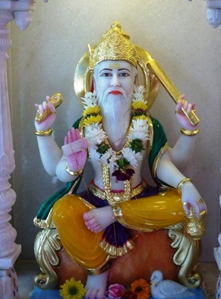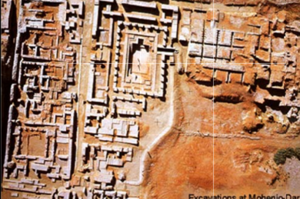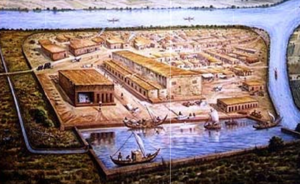Talk:Hindu Architects Viśvakarmā and Māyā
By Vishal Agarwal
Viśvakarma was the first architect of humanity. Even today, a pūjā is performed to Viśvakarma once a year in many factories owned by Hindus. This is because Viśvakarma is treated as a Deva who should be respected and worshipped by all craftsmen and engineers. The mūrti of Viśvakarma shows him holding tools in two of his hands. Many architects and craftsmen in India who can design traditional Mandirs claim to be descendants of Bhagavān Viśvakarma.
Another famous architect in ancient times was Māyāsura. According to the Mahābhārata, Kṛṣṇa commanded Māyāsura to construct the palace of the Pāṇḍava brothers in their capital city of Indraprastha. Today, New Delhi, which is the capital of India, is constructed over this site.
Two books on architecture, named Viśvakarma Saṁhitā and Māyamatam are said to have been written by them respectively and are available today. But it appears that their original books are no longer available, and these two books were written by someone else in their name. However, from very ancient times, Vedic architecture appears to have followed very scientific principles.
In 2500 BCE, People living along the banks of the Sarasvatī and Indus rivers in NW India and Pakistan constructed numerous towns that were designed very scientifically. The streets in these towns were constructed at right angles to each other and were broad enough to allow traffic to pass through them easily. From all homes, a drain took all dirty water and waste from the bathrooms and emptied it into a covered street drain that ran parallel to the streets. A master drain collected sewage from all these street drains and dumped it into a pit away from the city.
One of the cities, Mohenjo-Daro (now in Pakistan), had a large tank whose sides were sealed so that it could hold water, like a swimming pool. The major streets were constructed in the directions at which important stars and constellations mentioned in the Vedas could be seen brightly at sunrise.
Another city named Lothal (in India) had a dockyard where boats could be loaded with goods for shipping. In many towns, homes and other buildings were built of bricks which were of a standard size, and their height, width, and length were in a fixed ratio. Moreover, archaeologists who study these ancient ruins have also found that many of the ratio between the length and width of these buildings were the same as the ratios that books on Vedic architecture like Bṛhat Saṁhitā describe.
Even though these books are thousands of years later than these ancient structures, it is quite clear that they followed the same rules of architectural science. In other words, we can conclude that the principles of Vedic architecture are perhaps the most ancient in the world, and are older than entire religions like Christianity and Islam.
The sophistication of city planning that we see in towns along the Sarasvatī and Indus rivers was not seen in the rest of the world till 2000 years later, during the Roman civilization in Europe.



